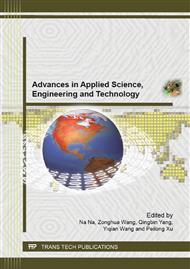p.262
p.266
p.273
p.281
p.286
p.292
p.297
p.301
p.305
Multi-Objective Optimization Design of Multi-Layer Rectangle Micro-Channel Heat Sink for Single-Phase Flow and Heat Transfer
Abstract:
The purpose of this paper is to optimize the structural sizes of multi-layer rectangle micro-channel heat sink, which has been widely used to cool electronic chip for its high heat transfer coefficient and compact structure. Taking the thermal resistance and the pressure drop as goal functions, a binary-objective optimization model was proposed for the multi-layer rectangle micro-channel heat sink based on Sequential Quadratic Programming (SQP) method. The number of optimized micro-channel in width n1 and that in height n2 are 21 and 7, the width of optimized micro-channel Wc and fin Wf are 340 and 130μm, the height of optimized micro-channel Hc is 415μm, and the corresponding total thermal resistance of the whole micro-channel heat sink is 1.3354 °C/W. The corresponding pressure drop is about 1.3377 Pa. When the velocity of liquid is larger than 0.3 m/s, the effect of change of velocity of liquid on the thermal resistance and pressure drop can be neglected.
Info:
Periodical:
Pages:
286-291
Citation:
Online since:
June 2013
Authors:
Price:
Сopyright:
© 2013 Trans Tech Publications Ltd. All Rights Reserved
Share:
Citation:


